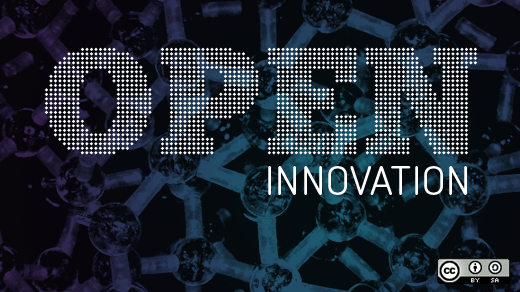Open innovation is an area only beginning to enter mainstream enterprises, despite years of success in open source communities. It allows people both inside and outside the company to get involved and collaborate on new products and processes that result in beneficial change.
Dr. Andrew McAfee, who coined the term "Enterprise 2.0," recently highlighted "open innovation" as an area ripe for mainstream business adoption. Organizations that want to find fresh approaches to their business processes, product or service offerings are encouraged to look outside traditional sources of expertise and be receptive to new contributors.
A research paper released last month by the McAfee-led AIIM Task Force on Social Business and Process Innovation, showed high levels of satisfaction for early adopters, but still found significant levels of reluctance to engage with external stakeholders such as customers, partners or prospects.
Through its case studies and survey results, the McAfee research reveals open innovation is working for its practitioners who report consistently satisfactory outcomes. Forty-eight percent of respondents engaging in open innovation reported major changes to internal processes, while 34 percent reported positive changes to external offerings.
Best summarized in what has become known as "Joy's Law," open innovation encourages companies to consider that "the smartest people work for somebody else. " Tapping into this intelligence is a key component to cost-effectively uncovering new perspectives on process and product improvements. Looking for expertise anywhere in the company org chart, across business units, regional offices and in all levels of the hierarchy can benefit a company on many levels. One research participant observed, "With a social media innovation system, you can find the ideas and develop them so that you can grow your business. "
Entrenched company culture can be a barrier to change, according to the McAfee Task Force paper. Many companies don't feel ready to embrace open innovation. Changing internal culture to be more receptive to diverse contributors can be difficult, as can re-thinking reward systems to encourage new ideas to be offered and adopted.
The McAfee research offers a series of recommendations to aid in breaking down business resistance to open innovation practices and encouraging a more open work culture. Key recommendations:
-
Do something. Open innovation is appropriate now for most if not all organizations. Ideas that can contribute to revenue growth or cost savings exist all across the enterprise — not only in management ranks.
-
Be focused. Help get creativity started by focusing on specific goals. Unstructured, vague calls for contribution are less effective than asking for concentration on specific opportunities or challenges.
-
Reward contribution and reputation. Monetary rewards aren't required, but a form of recognition of contribution, participation or helpfulness does increase participation and repeat input.
-
Open up to customers. Most of the task force respondents had "internal only " innovation communities. However those organizations that did open up more broadly to include external stakeholders received most of their best ideas from outside participants.
-
Be patient. Open innovation is not an overnight phenomenon. It means changing behavior and culture, and this requires sustained attention and effort, often accomplished slowly.
Open innovation is second nature for open source communities, but remains a relatively new concept in most businesses. More research and case studies that demonstrate the tangible benefits of an open approach to contributions, ideas and debate are needed. Keeping the focus on this important evolution in enterprise thinking is essential to helping your company stay relevant, creative and competitive in the digital knowledge economy of today.





1 Comment